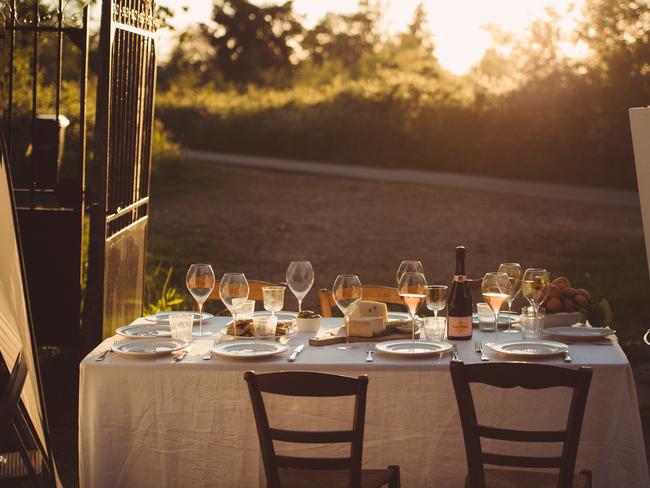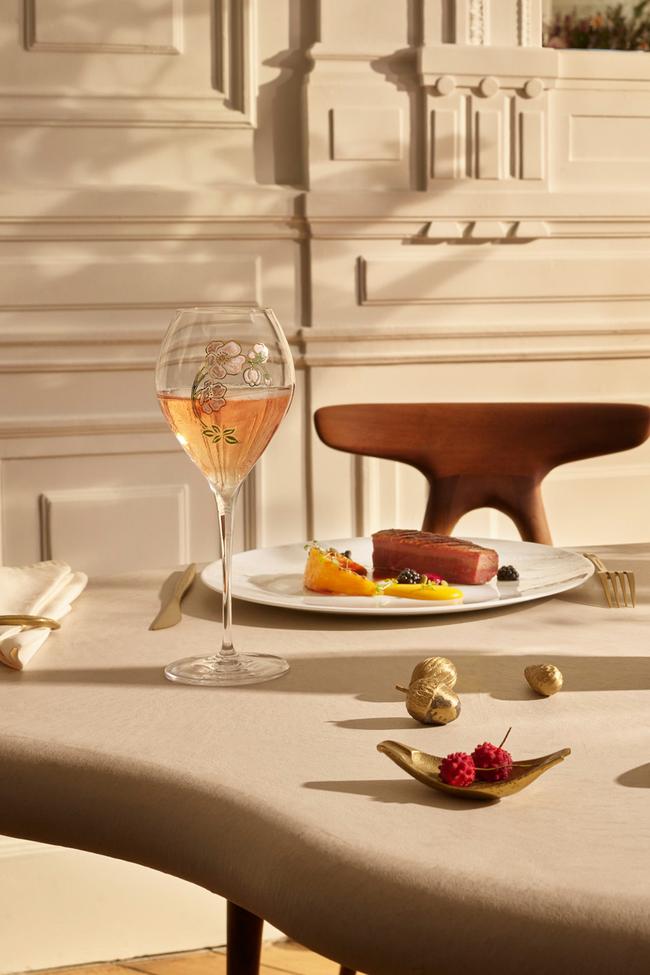It’s time to rethink pink champagne
Saving rosé champagne for dessert? You’re doing it all wrong...

Wine pairing is the industry’s most popular, most contentious and, most imperfect art. “Classic” pairings may include your spice-laden shiraz with your steak, your cashew-and-citric tinged chardonnay with your roast chook, and your off-dry riesling with sweet and sour pork. There are countless commonly agreed-upon tenets of the wine-pairing world, and they’ve stretched to include the pairing of rosé champagne with dessert.
When the berry compote, the mille-feuille or even the pavlova is placed so lovingly on our tables, even adventurous wine lovers default to the familiar bubbles of rosé champagne. It is a famous and well-loved pairing for a reason. But is it the best one?
For many people, dessert is not a serious course. Lacking an immediately serious pairing, therefore, it gets thrown together with its “unserious” sibling, champagne. Pink bubbles bursting with such childish effervescence you’d be forgiven for thinking a young rosé champagne was a freshly cracked Kirks Creaming Soda.
But why have we relegated pink champagne like this? Good rosé champagne carries a grossly misunderstood level of vinosity, and haunting aromas that are redolent of the great red Burgundies – all of which are grown and vinified not too far from Champagne. In fact, great rosé champagne has more in common with the Burgundian than it does with the Provençal – the association many make when they hear or see the word “rosé”.
The very best rosé champagnes – your Dom Perignon Rosé, Veuve Clicquot Grande Dame Rosé, Krug Rosé NV – will vary from a darker-hued wine carrying savoury notes of cured meat and spices, to the more well-known style closer to salmon-coloured with a more fruit-forward flavour profile of berries and cream. Both styles have their advantages, as well as their place in the dining order, but more and more we are seeing them served with – gasp – savoury foods.

For acclaimed chef and cookbook author Josh Niland, “the underlying salinity and brininess of the 2006 Dom Perignon Rosé is a perfect partner for our fish charcuterie”. Niland, who will also helm a signature restaurant at the new Singapore Edition hotel, has mastered seafood pairings like few others. He adds: “While its rich fruit-forward profile is the star of the show, this rosé champagne offers a very subtle smokiness, which perfectly aligns to Rock Flathead Mortadella as well as the rich and fatty Yellowfin Tuna Salami.”
The seafood-inflected preference is echoed by Dean O’Reilly, ambassador for Möet Hennessy, “A favourite is Moët & Chandon Imperial Rosé NV,” he says. “Its style has bright fruitiness and soft, lush red wine nuances that match perfectly with tuna tartare or beef carpaccio.”
There are two ways to make rosé champagne. There’s the more structured saignée method, where the red grapes are left to macerate on the skins for a short time so they take on a pink hue before being “bled’ off into a fermentation tank. Then there’s blending, where red wine from the Champagne region is added to the grape juice to give it the desired colour.
Rosé champagnes with even a few years under cork still have a brash and sprightly feel to them, with berries underlaid with fresh citrus, making them ideal for lighter meat such as grilled scampi, coral trout and Moreton Bay bugs. It’s exactly the match adored by chef Guillaume Brahimi of Crown’s Bistro Guillaume. “My favourite rosé champagne is Billecart,” he says. “I love pairing it with my in- house smoked salmon. It’s also delicious with a crudo of tuna.”
Should you have the patience to refrain from immediately blasting the champagne cork into the night sky, that youthful exuberance will be replaced with a wiser frizzante feel, offering a deeper and more profound palate – think rosehip tisane, light smokiness, even hoisin-like characters – begging to be married with duck, roast lamb, or various red meats for older vintages.
Plates that are themselves kissed by sweetness are a natural pairing for rosé champagne. Pork dishes, even kangaroo served with a berry glaze is heaven alongside pink bubbles – a combination the French could only dream of. The time is nigh to challenge our established pairing notions.
This story appears in the October issue of WISH Magazine, out now.
